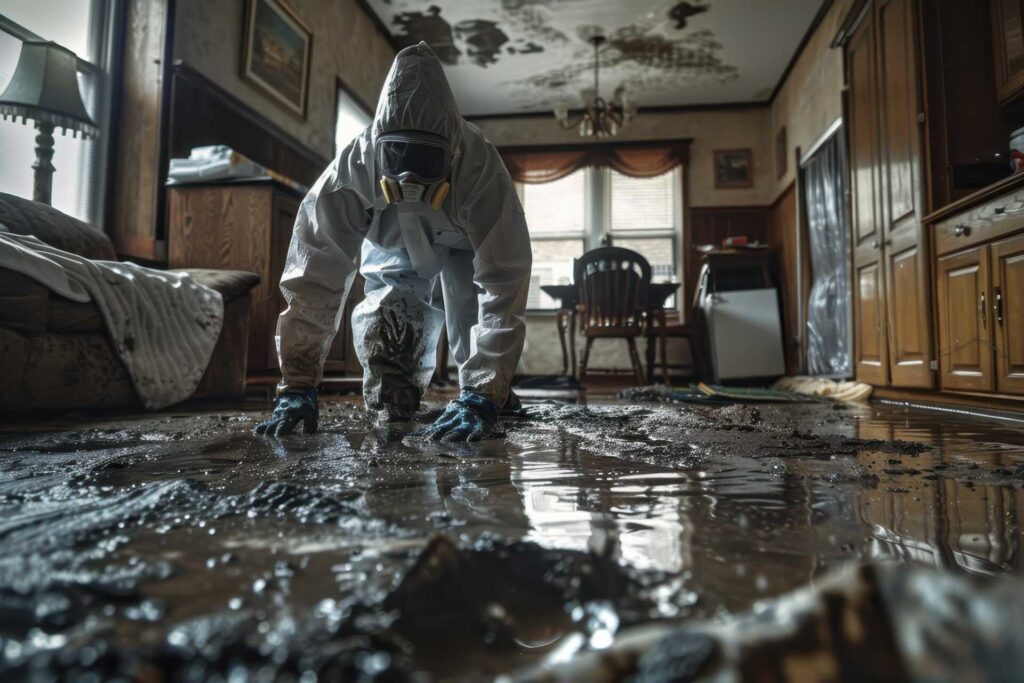
Contents
After a flood, the aftermath can feel like a battleground, with contaminated water lurking like an unseen enemy. This floodwater harbors dangerous pathogens that can threaten your health and that of your loved ones. You might think a simple cleanup will suffice, but without proper biohazard decontamination, you’re risking serious illness and longer-term consequences. Understanding the importance of professional services in this situation is essential—what happens if you overlook this vital step?
Key Takeaways
- Contaminated floodwater carries harmful pathogens that can lead to serious waterborne illnesses and infections.
- Professional decontamination ensures thorough cleanup and eliminates health risks associated with hazardous materials.
- Vulnerable populations, such as children and the elderly, face heightened risks from exposure to contaminated water.
- Neglecting decontamination can result in long-term health problems and increased repair costs due to structural damage.
- Immediate and effective decontamination protects both individual health and community safety in the aftermath of flooding.
The Dangers of Contaminated Floodwater
When floodwaters invade your home or community, the risks posed by contaminated water can be severe. You may not realize that floodwater often carries various pathogens, which can lead to serious waterborne illnesses. These pathogens include bacteria, viruses, and parasites that thrive in unsanitary conditions and can easily infiltrate your living space.
Exposure to contaminated water can result in gastrointestinal issues, skin infections, and respiratory problems, affecting you, your family, and your neighbors too. It’s essential to recognize that even small amounts of contaminated water can pose significant health risks, especially for vulnerable populations like children and the elderly.
Taking immediate action to address these dangers is critical for your safety and well-being. By understanding the risks associated with contaminated floodwater, you can better protect yourself and your community from the lasting impacts of these hazardous pathogens.
Health Risks Associated With Biohazards
Contaminated floodwater introduces a host of biohazards that can greatly impact your health. When you come into contact with this water, you expose yourself to numerous health hazards, including harmful bacteria, viruses, and parasites.
Pathogen exposure from floodwater can lead to serious illnesses like gastrointestinal infections, respiratory issues, and skin irritations. People with weakened immune systems, young children, and the elderly are particularly vulnerable.
Even a seemingly minor cut can become infected if contaminated water enters the wound. Additionally, surfaces and belongings soaked in floodwater can harbor these pathogens, prolonging your risk of exposure.
It’s vital to recognize these health risks and take them seriously. Understanding the dangers of contaminated floodwater can help you make informed decisions about your safety and well-being.
Prioritizing your health and that of your loved ones is essential in the aftermath of flooding.
Importance of Professional Decontamination Services
Given the serious health risks posed by biohazards in floodwater, seeking professional decontamination services becomes essential.
You might think about tackling the cleanup yourself, but the reality is that professional expertise makes a significant difference.
Experts are trained in advanced decontamination techniques that effectively eliminate harmful pathogens and contaminants that floodwaters often carry.
Steps Involved in Biohazard Decontamination
After securing professional decontamination services, understanding the steps involved in biohazard decontamination is essential for ensuring a thorough cleanup.
The decontamination process is meticulous and follows strict safety protocols to minimize health risks.
Here are the key steps you can expect:
Assessment: Professionals evaluate the affected area to identify hazards.
Containment: They establish barriers to prevent the spread of contamination during cleanup.
Removal: Contaminated materials, such as water-damaged items, are safely removed.
Disinfection: The area undergoes thorough cleaning using appropriate biohazard agents.
Final Inspection: A follow-up assessment ensures that all contaminants have been eliminated.
Long-Term Effects of Neglecting Decontamination
When you neglect biohazard decontamination after flooding, the consequences can be severe and long-lasting. Prolonged exposure to contaminants like mold, bacteria, and chemicals can lead to serious health issues, including respiratory problems and infections.
These long-term consequences not only affect your physical well-being but can also disrupt your emotional and social life. Residents may experience anxiety and stress from living in an unsafe environment, which can strain relationships and hinder community cohesion.
Additionally, structural damage may worsen over time, increasing repair costs and complicating your living situation.
Summary
Biohazard decontamination after flooding is as crucial as a lifeline thrown to a drowning swimmer. Neglecting this critical process can expose you and your community to serious health risks, making professional services beneficial and essential. By ensuring thorough cleanup, you protect your physical health and emotional well-being, paving the way for a safe and stable environment. Don’t underestimate the importance of timely decontamination; it’s key to restoring safety and preventing future hazards.
Recent Posts
How to Safely Decontaminate Flood-Damaged Homes
Flooding affects millions of homes in the U.S. each year, making effective decontamination essential for
Top Biohazard Decontamination Tips for Flooded Homes
Flooded homes present significant biohazard decontamination risks that many overlook, especially when it comes to
What Is Biohazard Decontamination for Flooded Homes?
When floodwaters recede, they often leave behind more than just moisture; they can introduce serious
